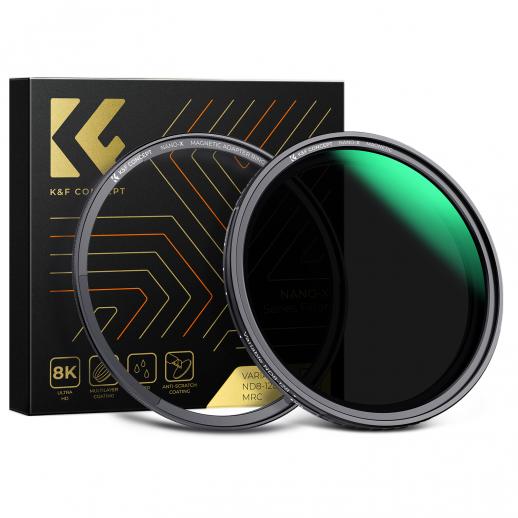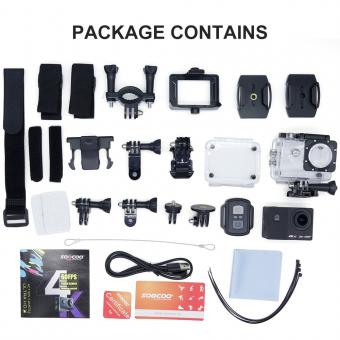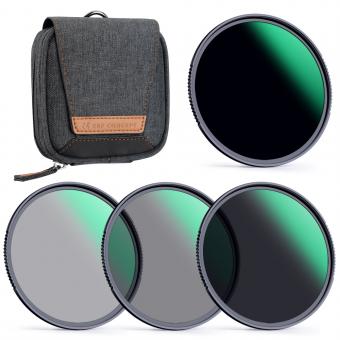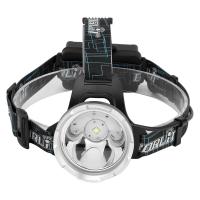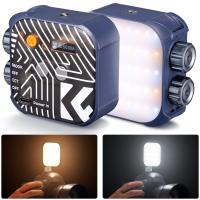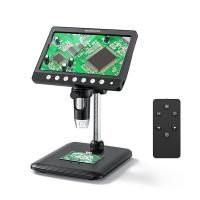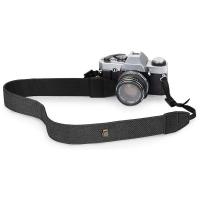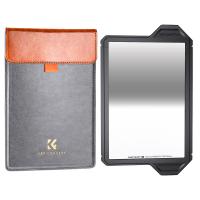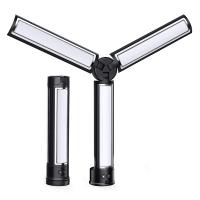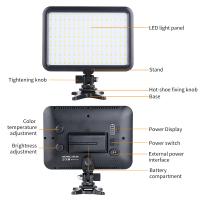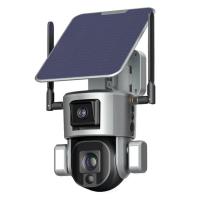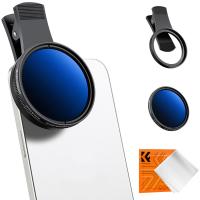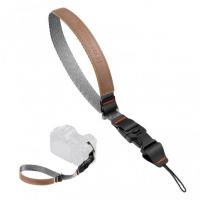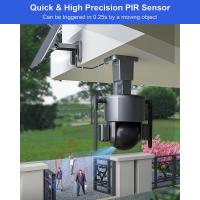The magnetic ND filter, or the magnetic neutral density filter, attaches to the lens via an adapter ring, utilizing magnetism for quick and easy assembly and disassembly. Its lightweight design and stepless adjustability offer more convenient exposure control than traditional rigid ND filters. This article delves into the best magnetic ND filters available, addressing key user intents and providing insights to help you make an informed choice.
Comparison of Different Filter Functions
In Photograph, each type of lens filter offers unique advantages that cater to specific shooting conditions and artistic preferences. Understanding these differences can help photographers make better judgments and produce more satisfying images.
| Fixed ND | Variable ND | Square Filter System | Gradient GND Filter | Magnetic Filter |
Advantages | The ND value of this filter is fixed, which can accurately control the exposure time in a specific scene, and the price is relatively low. | The ND value of this filter can be adjusted, so it can be used in different scenes. It has a wide range of applications and can meet the exposure time control requirements in different scenes. | Compared with disc ND, different bracket rings can be used to adapt to lenses of different apertures, which can reduce the purchase of filters and save costs. In addition, multiple pieces can be stacked, and dark corners are less likely to occur. | Used to balance the exposure under different lighting conditions, it can provide better exposure effects in scenes with uneven lighting. | Easy to disassemble and assemble, one magnetic ring can correspond to different lens filters, allowing for quick disassembly and replacement of filters. |
Disadvantages | The ND value cannot be adjusted and can only be used in specific scenarios. | The overall light transmittance and image quality will be worse than the fixed ND; cross-shaped textures will appear, affecting the shooting effect. | A single product is relatively expensive and not very convenient to carry, and is suitable for users who take landscape photos. | It can only be used in scenes with obvious dividing lines, and the composition has certain limitations. | The magnetism is not too strong for quick assembly and disassembly. It cannot be placed in the storage bag alone, otherwise it will be easily knocked off. |
Magnetic ND filters have other irreplaceable advantages than traditional ND filters.
Advantages of Magnetic ND Filters:
- Ease of Use and Speed of Assembly/Disassembly;
- Stepless Adjustability and Precision;
- Improved Build Quality and Durability;
- Reduced Risk of Cross-Threading and Damage;
- Better Compatibility and Adaptability;
- Smooth Filter Transitions;
- Improved Focus on Composition;
All in all, these are the reasons why many photographers choose magnetic filters over traditional rigid screw-on ND filters, but what factors should we consider when we need to buy magnetic ND filters? Let’s explore this question from different angles then.
Key Features of the Best Magnetic ND Filters:
1. High-Quality Optical Glass and Color Neutrality:
High-quality optical glass is the pursuit of excellent clarity, minimal distortion, and precise color transmission. Color neutrality refers to the ability of a filter or lens to maintain true-to-life colors in the captured image, and high-quality optical glass and color neutrality ensure that photographers can capture images with superior clarity and accurate colors, enhancing the overall quality and authenticity of their work.
2. Strength and Compatibility of Magnetic Connection:
The strength of the magnetic connection between the filter and the adapter ring must be moderate, not too strong to interfere with ease of use, but also to ensure that the filter remains securely attached to the lens during use. Additionally, compatibility with a wide range of lens sizes and types is essential for versatility. Please verify your camera's lens thread size before ordering, which this number is always proceeded by a "Φ" (diameter) symbol.
3. Build Quality and Durability:
Buy a magnetic ND filter with multi-layer coatings and double-sided polishing processes, as well as pay attention to the persistence of magnetic attraction
4. Price and Value for Money:
For many photographers, the price is a significant consideration. Balancing quality and cost is essential to ensure you get the best value for your investment.
5. Brand and User Reviews:
Brand and authority can dramatically improve your shopping experience. K&F Concept, a famous brand working in the field for 12 years, has also been recognized widely by the industry in the pursuit of product quality excellence. It has won the Japanese Digital Camera Grand Prix Gold award for five consecutive years and has been awarded the German Red Dot Product Design Award, the German iF Product Design Award, and other honors, so if you are lost in the numerous products, choosing the market-test brand is a good idea.
Best Magnetic ND filters Recommendations:
If you are too busy and tired to make a choice from the complex market, then I have prepared some helpful recommendations for you to make the most appropriate choices according to your needs. There are two kinds of magnetic ND filter systems, including magnetic neutral density (solid) filters, which has a fixed ND value and unlimited variable ND filters. They both have magnetic functions, but they also have the advantages and disadvantages of the above-mentioned fixed ND filter and variable ND filter.
Magnetic Variable ND Filter vs Fixed ND Filter:

1. Quick installation and removal;
2. No color cast, 6-speed dimming;
3. 16-layer nano-coating;
4. Mold-proof, Waterproof, Scratch-proof and Greasy-proof;
5. Equipped with aerospace-grade aluminum alloy material magnetic lens cover, both magnetic and threaded, you can install the lens, two-in-one function.
ND1000 Filters (NOT adjustable): Suitable for a long time exposure, like traffic flow, foggy lake surface, light painting creation.
1. Second Install & Swap;
2. No Black "X”;
3. 28 Multi-Layer Coatings;
4. Magnetic Adapter Rings;
Magnetic Variable ND Filters: Extend exposure time, never miss any wonderful moment. This makes it easier to achieve effects such as a shallower depth of field or blurred motion.
These two magnetic ND filter kits reduce the time it takes to swap out lens filters literally in seconds, a 1-second swap, never missing any wonderful moment, and more ND filter sets are available on our website, welcome to visit!
When to Use the Magnetic ND Filters?
Bright Conditions: Control exposure in bright sunlight.
Long Exposures: Capture motion blur in water or clouds.
Shallow Depth of Field: Use wide apertures in bright light.
Video Shooting: Maintain cinematic shutter speeds.
Creative Effects: Experiment with light and movement.
Conclusion:
Magnetic ND filters offer significant advantages over traditional rigid ND filters, making them an appealing choice for photographers who value efficiency, ease of use, and versatility. The quick attachment and removal, stepless adjustability, robust build quality, and reduced risk of damage contribute to a smoother and more productive photography experience. As the market for magnetic ND filters continues to grow, it’s worth exploring these innovative tools to enhance your photographic capabilities and streamline your workflow.
Q&As:
1. How to avoid common ND filter issues like cross-polarization?
Avoid Maximum ND Settings: Don’t push the filter to its darkest setting where cross-polarization is more likely.
Check Filter Alignment: Ensure the filter is properly aligned and seated on the lens.
Test in Controlled Conditions: Practice using the filter in controlled settings to understand its limitations.
Combine Filters Carefully: If stacking filters, use combinations that are known to work well together to avoid polarization issues.
2. How to clean magnetic ND filters?
Use a Blower: Start by using an air blower to remove loose dust and particles.
Microfiber Cloth: Gently wipe the filter with a microfiber cloth in a circular motion.
Dry with Care: If the filter is wet, use a dry part of the microfiber cloth to gently dry it.
3. How is the magnetic ND filter installed on the lens?
Attach Adapter Ring: Screw the magnetic adapter ring onto your lens.
Align Filter: Align the magnetic ND filter with the adapter ring.
Snap into Place: The magnetic connection will securely snap the filter onto the adapter ring.
Adjust as Needed: If using a magnetic variable ND filter, rotate to adjust the density level.

